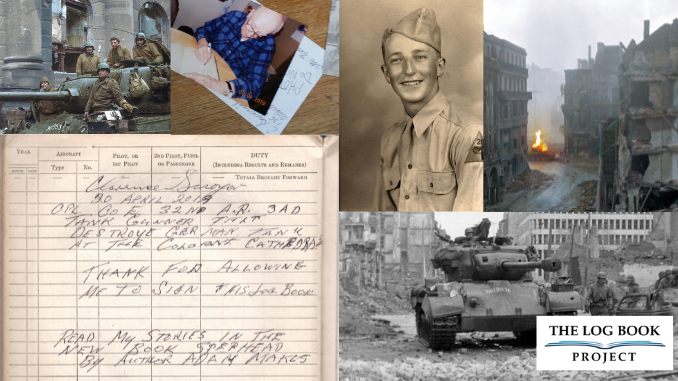
Clarence Edward Smoyer, born in 1923 in Pennsylvania, served as a tank gunner in the U.S. Army’s 3rd Armored Division, known as the “Spearhead Division,” during World War II. Drafted in 1943, he underwent training at Fort Knox, Kentucky, and was assigned to Company E, 2nd Battalion, 32nd Armored Regiment. Initially operating M4 Sherman tanks, Smoyer later transitioned to the more advanced M26 Pershing tank, equipped with a 90mm gun.[1]https://www.loc.gov/item/afc2001001.119494/
Smoyer saw extensive combat across Europe, including significant engagements in Normandy, the Battle of the Bulge, and the final push into Germany.
32nd Armored Regiment
Clarence Smoyer served in the 3rd Armored Division’s 32nd Armored Regiment, a unit integral to the Allied advance across Western Europe during World War II. The 32nd Armored Regiment, known by its motto “Victory or Death,” was activated in 1941 and trained extensively in the United States before deploying to England in September 1943. There, they prepared for the invasion of Nazi-occupied Europe on the Salisbury Plain.
The regiment’s combat debut came on June 29, 1944, at Villiers-Fossard, Normandy, where it faced entrenched German forces.[2]https://3adspearhead.com/32nd.ARH.html Despite heavy resistance, the 32nd’s Sherman tanks led Combat Command A to its objectives. Under the leadership of Colonel Leander L. Doan, the regiment advanced through France and Belgium, participating in significant battles such as the closure of the Falaise Pocket and the liberation of cities including Meaux, Soissons, and Liège.
The 32nd Armored Regiment played a pivotal role in breaching the Siegfried Line and was instrumental in the capture of Cologne in March 1945. The regiment’s 2nd Battalion, in which Smoyer served, received a Distinguished Unit Citation for its actions during these operations. The division continued its advance into Germany, contributing to the encirclement of the Ruhr Pocket and the liberation of the Nordhausen concentration camp.
The 3rd Armored Division, nicknamed “Spearhead,” was recognized for its rapid and aggressive tactics, often leading the First Army’s advances. By the end of the war, the division had suffered over 10,000 battle casualties but had achieved significant victories, including being the first U.S. division to enter Germany and capture a German city.[3]https://encyclopedia.ushmm.org/content/en/article/the-3rd-armored-division


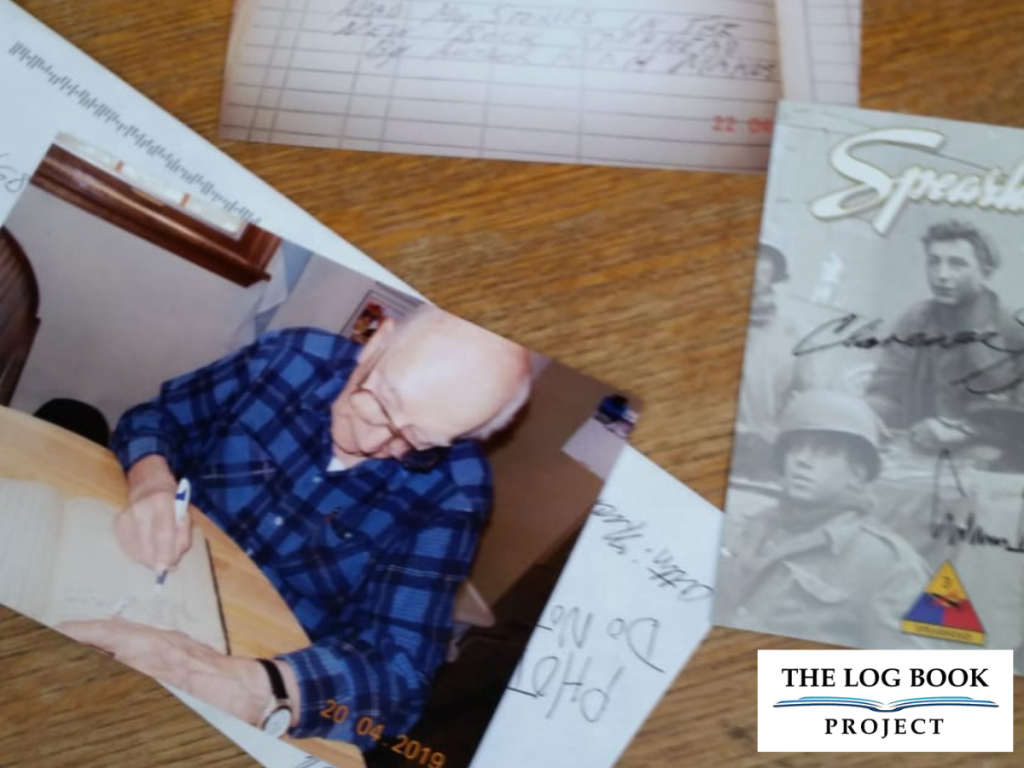
Cologne
Cologne, heavily bombed and largely in ruins, presented a complex battlefield. German forces utilized the city’s infrastructure, including underground tunnels known as “mouse trails,” to maneuver and launch ambushes. As Smoyer’s unit progressed, they encountered a formidable German Panther tank positioned near the Cologne Cathedral. This Panther had already destroyed two American Sherman tanks, resulting in the deaths of three crew members.
Smoyer’s crew, operating a new M26 Pershing tank equipped with a 90mm gun, was tasked with neutralizing the Panther. The plan involved approaching via a side street to target the Panther’s flank. However, as they entered the intersection, they found themselves directly facing the Panther’s gun. Reacting swiftly, Smoyer fired three rounds: the first struck under the gun shield, and the subsequent two penetrated the side armor, igniting the Panther.[4]https://3adspearhead.com/Smoyer.html
The entire engagement was captured on film by Army cameraman Jim Bates, making it one of the few tank battles of the war documented in real-time.
The below video on YouTube includes the footage and also provide a very poignant account from those that were involved. One must always illuminate the human side and recognize how much is lost in war, on all sides.
Shortly after the battle, he was cited for fraternization when he offered bubble gum to German children, violating Army regulations at the time. This incident resulted in the rescission of his Bronze Star award, even as his tank commander and the cameraman received theirs.[5]https://www.armytimes.com/news/your-army/2019/09/19/the-hero-of-cologne-receives-his-bronze-star-75-years-late/ It wasn’t until September 18, 2019, nearly 75 years later, that Smoyer was formally awarded the Bronze Star in a surprise ceremony at the National World War II Memorial in Washington, D.C. The event was orchestrated by author Adam Makos, who chronicled Smoyer’s story in the book “Spearhead”.[6]https://www.army.mil/article/227380/hero_of_cologne_receives_bronze_star_during_surprise_ceremony
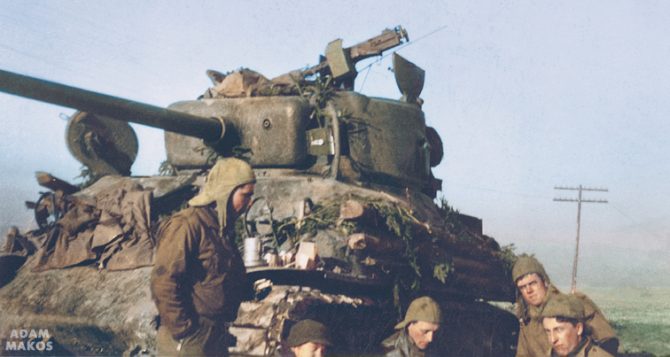


Legacy and recollection
After the war, Smoyer returned to Allentown, Pennsylvania, where he led a quiet life, seldom speaking of his wartime experiences. Despite being dubbed the “Hero of Cologne” after his decisive tank duel near the Cologne Cathedral, he often downplayed his role, reflecting a deep sense of humility. His story remained largely untold until author Adam Makos chronicled it in the 2019 bestseller Spearhead: An American Tank Gunner, His Enemy, and a Collision of Lives in World War II.
In his later years, Smoyer grappled with the moral complexities of war. One poignant memory involved the civilian vehicle caught in crossfire during the Battle of Cologne (see video), leading to civilian casualties. This incident haunted him, highlighting the unintended consequences of combat.
Reconciliation
Decades later, Smoyer met Gustav Schaefer, the German tank gunner he had faced in Cologne.[7]https://www.artofmanliness.com/character/military/podcast-494-the-inspiring-story-of-one-of-wwiis-greatest-tank-gunners/ Their meeting underscored the shared humanity between former adversaries and the lasting impacts of war. The reunion was emotional and reflective, marked by neither bitterness nor triumphalism.
Smoyer expressed remorse over the human cost of war, particularly the civilians caught in the crossfire. Schaefer, too, shared his difficult memories and acknowledged the toll the war took on both sides.
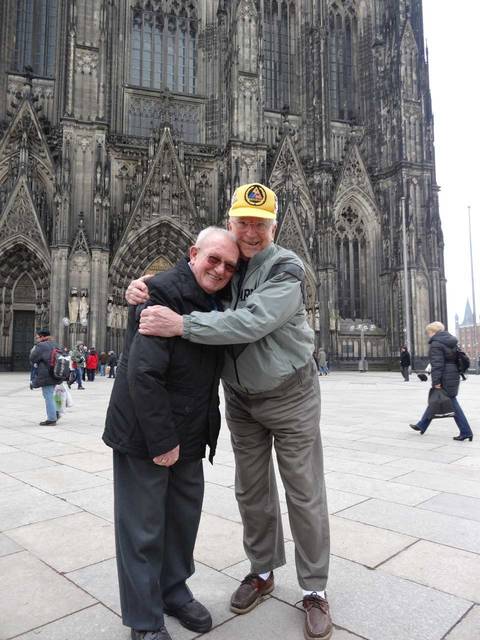
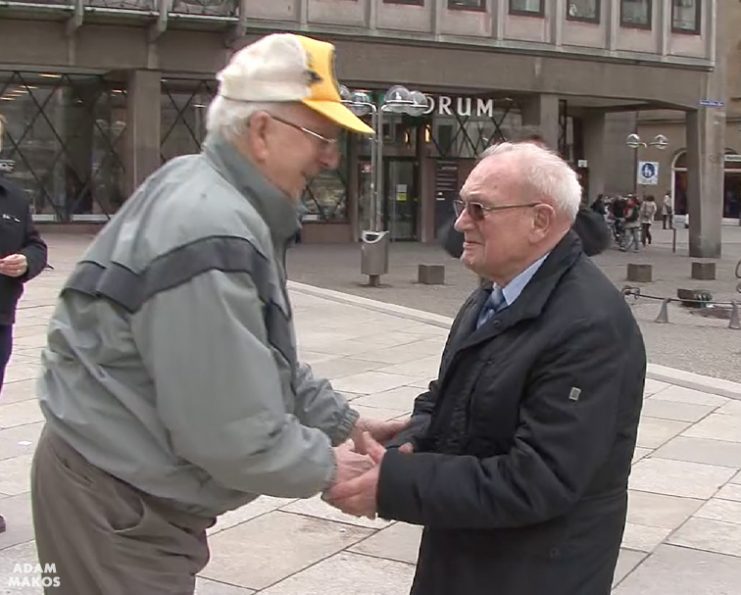
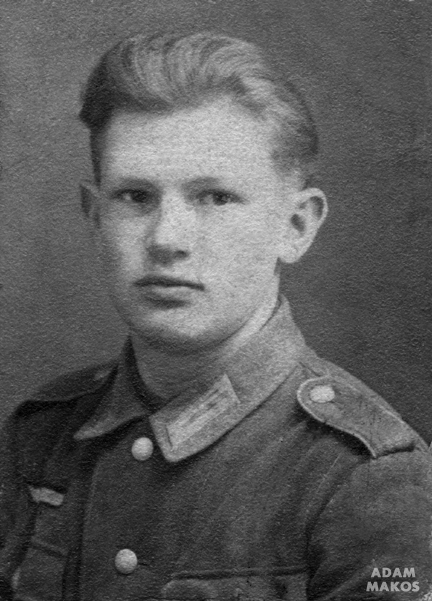
Their relationship embodied post-war reconciliation, mirroring similar post-conflict efforts seen in other veteran communities, such as those between American and Japanese pilots or between Allied and Axis infantrymen.
During their reunion in 2013 a poignant moment of their reconciliation was marked by their joint visit to lay flowers at the grave of Katharina Esser, the civilian casualty of their 1945 tank battle in Cologne.
Smoyer’s openness to engaging with former adversaries underscores a theme central to many veterans’ post-war reflections: that the real enemy was the war itself, not the individual soldier.
“We were soldiers doing our duty. That’s all.”
Clarence Smoyer, Spearhead[11]https://en.wikipedia.org/wiki/Spearhead_(Makos_book)
Clarence Smoyer passed away on September 30, 2022, at the age of 99. His legacy lives on through the stories of his valor, the lives he touched, and the profound reflections he shared on the costs of war.
References



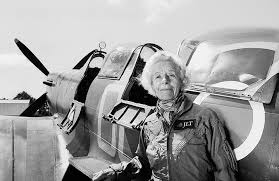
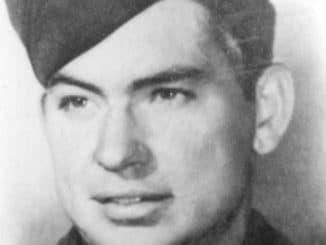
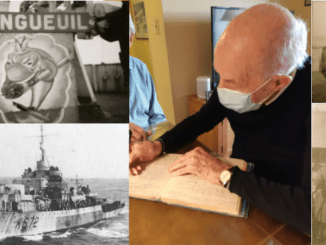
Be the first to comment